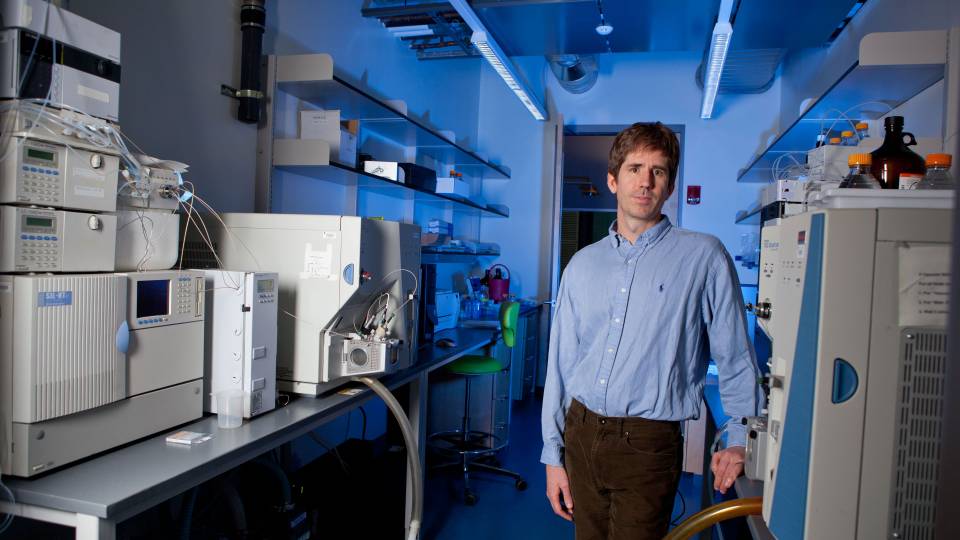Joshua Rabinowitz, a professor of chemistry and the Lewis-Sigler Institute for Integrative Genomics and the director of the Ludwig Institute for Cancer Research Princeton Branch, is the principal investigator on new research quantifying how animals keep their blood chemistry in balance, a process known as metabolic homeostasis.
Chemists tend to think of the human body as operating out of a sense-and-respond paradigm. For example, you eat sugar, the pancreas senses the intake, and it responds by releasing the hormone insulin to keep your glucose levels in check.
Scientists have long wondered whether there is a similar regulatory strategy for clearing other metabolites, like amino acids, to keep blood levels in a healthy range.
The short answer: Nope.
in the current issue of Nature Metabolism, Joshua Rabinowitz, professor of chemistry and the Lewis-Sigler Institute for Integrative Genomics, reports with his research group that much of metabolic balance in animals doesn't require any sensing at all.
Instead, a chemical principle known as mass action oversees the homeostasis, automatically clearing many of these circulating metabolites when they show up in the bloodstream without the production of a signal hormone.
“In layman’s terms, when you eat a meal and you have an influx of amino acids from protein or acetate from vinegar, your body naturally adapts to clear the excess levels from the bloodstream. This happens simply, via chemical machinery that makes the nutrients go away in proportion to how abundant they are. It doesn’t take any regulation or sensing,” said Rabinowitz, who is also the director of the Ludwig Institute for Cancer Research Princeton Branch.
This is the first quantitative study in animals to demonstrate the relationship of mass action to the preservation of homeostasis.
“There are parts of biology, parts of our bodies, that work in a simple way. This is a nice example of that,” he said. “Things that are simple are robust, and this is probably part of why there aren’t a lot of people suffering from amino acid imbalance.”
Circulating metabolites feed our organs a continuous supply of essential nutrients and building blocks. Understanding their regulation and control has important implications for the treatment of disease. In order to responsibly manipulate amino acid levels or carbocyclic acid levels to bolster the immune system or impair tumor growth, for example, we have to understand the basic rules by which these levels are governed.
More broadly, Rabinowitz points out that the research illustrates how chemistry can illuminate and even solve longstanding biological questions.
The lead author of the paper, Xiaoxuan (Athena) Li, is an advisee of Rabinowitz who earned her Ph.D. in 2021 with the Department of Molecular Biology.
See the full story at the Department of Chemistry.





